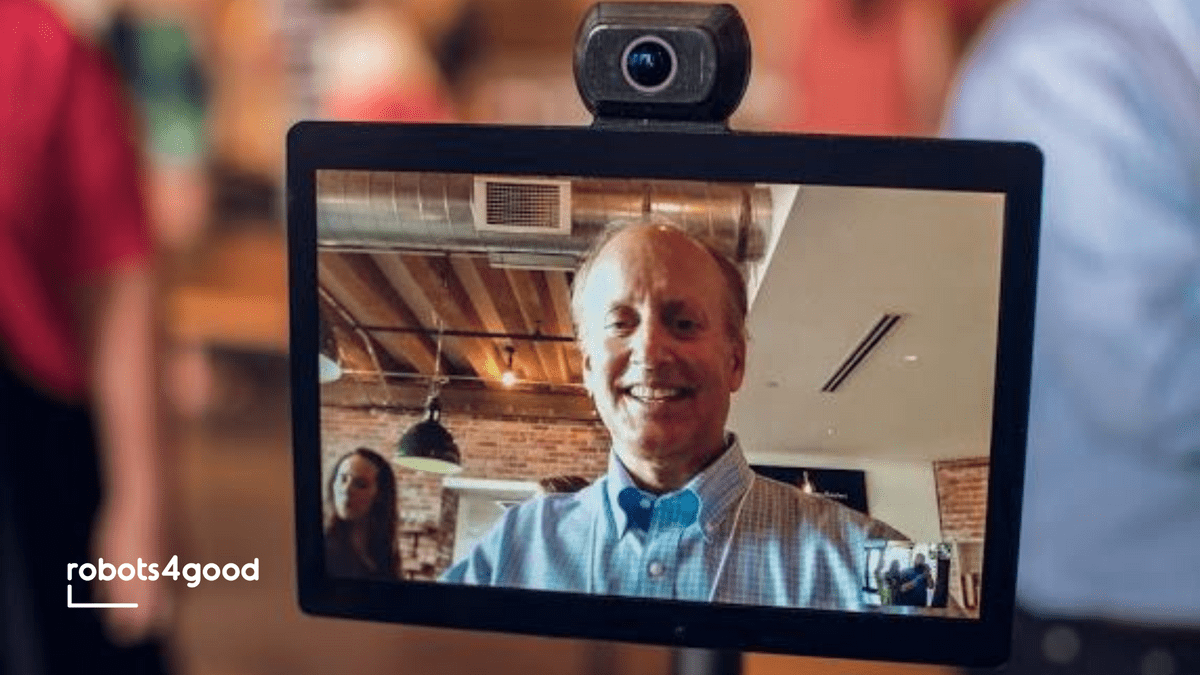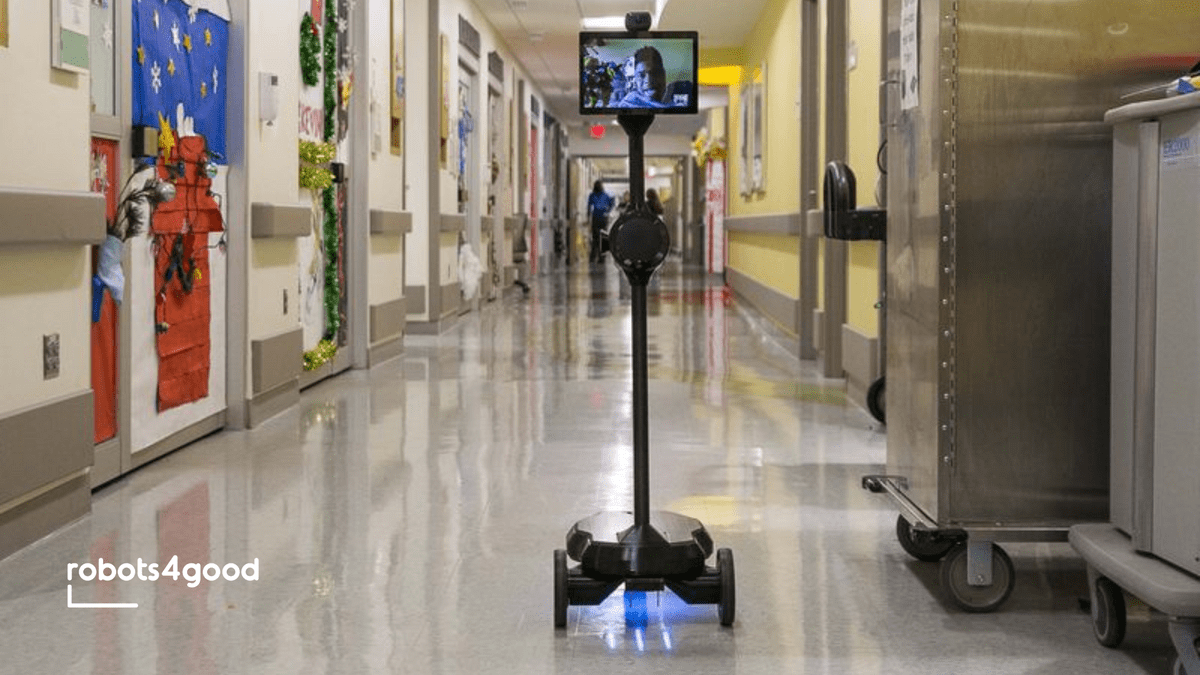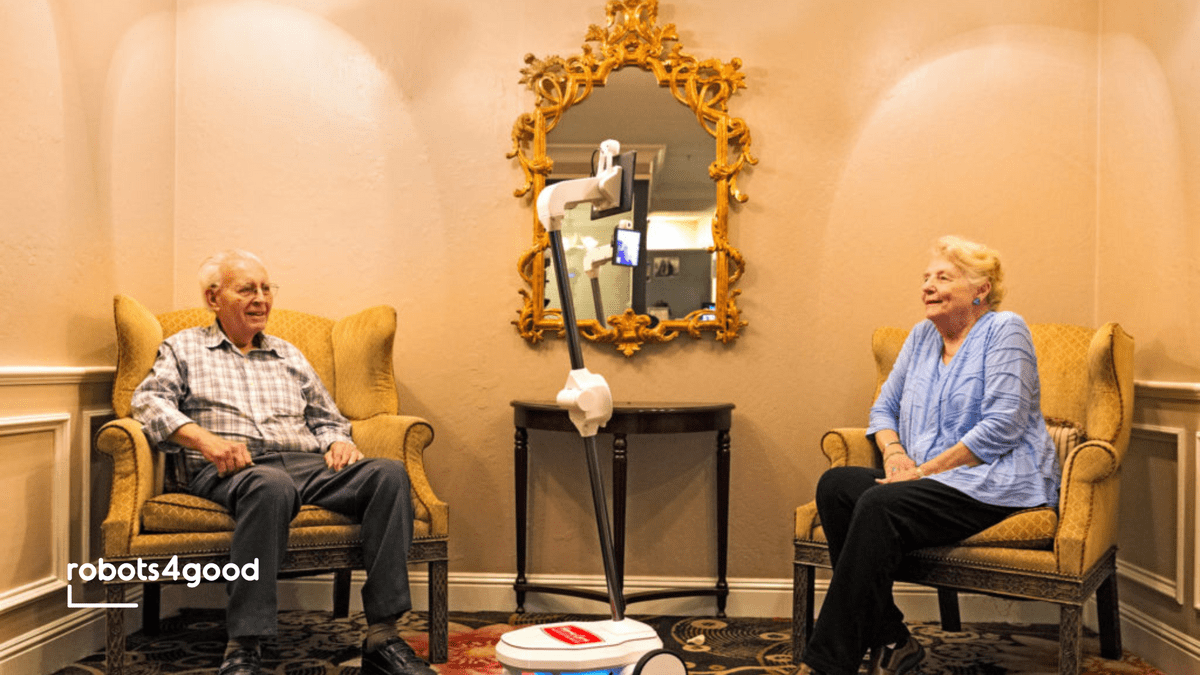All You Need To Know About Telepresence Robots - Robots4Good
All You Need To Know About Telepresence Robots - Robots4Good
Telepresence robots, once the stuff of science fiction, have become a reality that is transforming various industries across Australia. These robots are more than just machines; they are a bridge connecting people, enabling remote interactions, and enhancing the quality of life for individuals across different sectors, including disability support, healthcare, education, the workplace, and aged care. In this comprehensive guide, we will delve into everything you need to know about telepresence robots and how they are making a significant impact on Australian society.
The Rise of Telepresence Robots
Telepresence robots are autonomous or semi-autonomous robotic devices equipped with cameras, microphones, speakers, and screens that allow users to interact with remote environments and individuals. They are controlled remotely by a human operator and provide a physical presence in a distant location. The rise of telepresence robots can be attributed to advances in robotics, communication technologies, and the growing need for remote interactions and assistance in various industries.
Telepresence Robots in Disability Support
Telepresence robots have opened up new horizons for individuals with disabilities, offering increased independence and social inclusion. These robots allow people with mobility challenges to virtually attend events, visit distant places, and interact with others in ways that were previously difficult or impossible. For example, a person with limited mobility can use a telepresence robot to participate in a family gathering, explore a museum, or attend a business meeting, breaking down physical barriers and promoting inclusivity.
Healthcare and Telepresence Robots
Case in Point: In a remote town nestled in New South Wales, Australia, an elderly resident encounters an unforeseen health incident—a sudden fall. Instead of relying solely on periodic updates from caregivers, a compassionate family member takes advantage of the telepresence robot thoughtfully positioned within the patient's home. With remote control over the robot, this family member meticulously assesses the situation and collaborates with medical specialists, guaranteeing the patient receives immediate and top-notch care, all without the need for the patient to leave the comfort of their residence.
Telepresence Robots in Education
Education is another field where telepresence robots are making a profound impact. These robots enable students to participate in classes and educational activities, even when they cannot be physically present due to illness, disability, or geographical constraints. This technology promotes equal access to education and fosters a sense of belonging among all students.
Example: A high school student in a remote area of Queensland is diagnosed with a chronic illness that requires extended hospital stays. Despite being physically absent from school, the student continues to attend classes and interact with teachers and peers through a telepresence robot. This not only ensures that the student keeps up with their studies but also maintains a sense of connection with their school community.
Telepresence Robots in the Workplace
Telepresence robots are reshaping the way we work by facilitating remote collaboration and improving the work-life balance of employees. In Australia's vast and geographically dispersed landscape, these robots are reducing the need for extensive travel and enabling professionals to be in two places at once.
Use Case: A project manager based in Melbourne needs to oversee a construction project in remote Western Australia. Instead of spending days away from home, the manager uses a telepresence robot equipped with cameras and sensors to conduct virtual site inspections, collaborate with the on-site team, and make real-time decisions. This not only saves time and resources but also enhances project efficiency.
Telepresence Robots in Aged Care
Aged care facilities in Australia are leveraging telepresence robots to enhance the well-being of elderly residents. These robots enable seniors to stay connected with their loved ones, access virtual entertainment, and receive medical consultations, reducing feelings of isolation and improving their overall quality of life.
Illustration: In a residential aged care facility in Sydney, a telepresence robot nicknamed "JoyBot" roams the hallways, offering companionship and support to residents. JoyBot allows residents to virtually visit family members, join group activities, and even attend virtual tours of famous landmarks, bringing joy and a sense of adventure to their lives.
Key Benefits of Telepresence Robots
Now that we've explored how telepresence robots are transforming various aspects of Australian life, let's dive into the key benefits they offer across different industries:
1. Accessibility and Inclusivity: Telepresence robots break down physical barriers, enabling individuals with disabilities or in remote locations to participate fully in social, educational, and professional activities.
2. Improved Healthcare Access: These robots provide timely access to medical professionals, specialists, and healthcare services, particularly in underserved areas.
3. Enhanced Education: Students can continue their education without disruptions, ensuring equal access to learning opportunities.
4. Efficient Remote Work: Telepresence robots facilitate remote collaboration, reduce travel time, and enhance productivity in the workplace.
5. Social Connection: In aged care and disability support, these robots combat loneliness and improve emotional well-being by connecting individuals with their families and communities.
6. Cost Savings: Businesses benefit from reduced travel expenses and improved operational efficiency.
7. Environmental Impact: By reducing the need for physical travel, telepresence robots contribute to a decrease in carbon emissions and promote sustainability.
Considerations and Challenges
While telepresence robots offer numerous advantages, there are also considerations and challenges to address:
1. Security and Privacy: Ensuring the security of data and maintaining patient or user privacy is crucial, especially in healthcare and aged care settings.
2. Technological Limitations: Telepresence robots may have limitations in certain environments, such as uneven terrain or areas with poor internet connectivity.
3. Regulatory Compliance: Healthcare professionals must adhere to regulatory frameworks when using telepresence robots for medical consultations.
4. User Training: Proper training is essential to maximize the benefits of telepresence robots and ensure users are comfortable with the technology.
5. Cost: While telepresence robots can yield significant savings over time, there is an initial investment cost to consider.
The Benefits of Ohmni Telepresence Robots
The Ohmni Telepresence Robot represents a transformative leap in remote communication and assistance. Its sleek and user-friendly design conceals a multitude of benefits that make it an invaluable tool across various industries. Whether in healthcare, education, business, or beyond, the Ohmni Telepresence Robot delivers a range of advantages. Here's a comprehensive list of ten key benefits that set it apart in the world of telepresence technology:
Ten Key Benefits of the Ohmni Telepresence Robot:
1. Enhanced Accessibility: Ohmni empowers individuals with limited mobility to interact, communicate, and participate in various activities remotely.
2. User-Friendly Design: Its intuitive interface ensures easy operation, making it accessible to users of all ages and technical backgrounds.
3. High-Quality Video and Audio: Ohmni provides crisp and clear video and audio quality, fostering effective and engaging conversations.
4. Portability: Its lightweight and compact design allow for effortless movement and deployment in different environments.
5. Customisation: Users can personalise their Ohmni robot with accessories, ensuring it meets their specific needs and preferences.
6. Telehealth and Remote Consultations: Ohmni is an ideal platform for remote healthcare consultations, enabling patients to connect with medical professionals from the comfort of their homes.
7. Education: It facilitates interactive and immersive learning experiences for students, transcending geographical boundaries.
8. Workplace Productivity: Ohmni supports remote work and collaboration, reducing the need for physical presence and travel.
9. Family and Social Connection: It bridges the gap between distant family members, providing a lifelike presence during important life events.
10. Cost-Effective: Ohmni's affordability and versatility make it a cost-effective solution for various applications, ensuring a strong return on investment.
The Ohmni Telepresence Robot aligns perfectly with the needs of Australians due to its versatile and accessible design. Its capacity to bridge vast geographical distances in a country known for its remote regions is particularly significant. Whether it's connecting patients with healthcare professionals, students with educators, or employees with their workplaces, the Ohmni Robot addresses the pressing need for remote communication and assistance, promoting inclusivity, convenience, and improved quality of life for Australians across various industries and communities.
Conclusion
Telepresence robots are not just machines; they are a testament to human ingenuity and our ability to harness technology to improve lives. From healthcare to education, the workplace, and aged care, these robots are enriching the experiences of individuals and communities across Australia. As the technology continues to advance, it holds the promise of even greater accessibility, inclusivity, and convenience in our daily lives. Telepresence robots are not merely tools; they are companions on the journey towards a more connected, inclusive, and technologically empowered future.
About Robots4Good
As a leading provider of robots as a service, Robots4Good is the exclusive supplier of OhmniLabs services and robots in Australia and New Zealand for business, manufacturing, schools, hospitals, disability and aged care settings.




